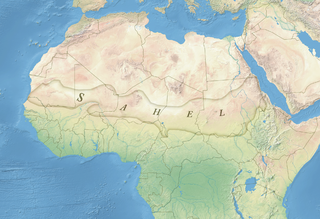The Global Christian Mission: In the Wake

The Sahel is, figuratively, the southern shore of the vast Sahara desert.
Image: Wikimedia Commons
Even with this English advance, the Netherlands were not eclipsed by England. South Africa was less than midway to the western Pacific, but even with that breadth of distance, by the 1650’s was the depot of the Dutch East India Company for products being transshipped from Indonesia to Europe. Cape Town was as much the entrepôt [warehouse and transshipment port] of the Dutch merchant fleets heading to Rotterdam, Antwerp, Leiden, and Amsterdam as it was the entrepôt of English ships headed for Liverpool and London. Among the merchants were those who represented the Reformed and Arminian Churches of Holland as well. Similarly, the English merchants had among them representatives of the “Presbyterial” Anglicans or as they popularly called “Puritans.”
In the course of time, southern Africa became a melting pot for western Europeans among the predominant Xhosa and Zulu native residents with the Dutch concentrated at Johannesburg and the English more concentrated at Port Elizabeth. The reason for this focus on South Africa is that it became the opening wedge to the rest of Africa for Western influence as well as Eastern. Most of Africa was a closed continent except for that part of Africa, north of the Sahel, and along the Mediterranean coast which, over the course of time, came under the dominance of Arabic and Ottoman Turkic forces, and consequently, the influence of Islam. Africa, below the Sahel, was a closed continent, which gave it the reputation as the “dark continent” until the late 18th century.
By the end of the 1500s and the start of the 1600s, ships from England, Portugal, France, the Netherlands, Belgium, Denmark, and Sweden, touched base on all continents facing large oceans. This included all major archipelagos and island groups as the Solomon, Hawaiian, Indonesian, the Bahamas, the Philippines, and the island groups within Micronesia (Mariana, Marshall, and Caroline), Melanesia (Bismarck Archipelago, Admiralty Islands, New Guinea) and Polynesia (Samoa, Society and Marquesas Islands) as well as Fiji, Tonga, and others.
England laid claim over the sea-lanes of the southernmost South Pacific and integrated Australia, New Zealand, the Chatham Islands, and Pitcairn Island far to the east adjacent to southern South America.
It was not until close to the 1640s that propagation of the gospel came through any other way than the daily contact of settlers with local peoples.
Where settlements arose, congregations of Christians did arise every place there was interaction between Christians and the islanders. It was not until close to the 1640s that propagation of the gospel came through any other way than the daily contact of settlers with the people of the Pacific islands. This was also true for North America, north of the Caribbean and the forerunners of the missionaries who came were the French Jesuits who gained the reputation of being the most effective in spreading the gospel. More than any other, they followed what was later labeled the “indigenous” principle. The French Jesuits made their greatest imprint in North America, both in Canada and the American settlements south of Canada. The earliest Christmas carol composed in North America was written by the Jesuit Jean de Brefeuf (1593-1649). It was not until a 20th-century Canadian newspaper correspondent in Quebec translated the carol out of the Huron language into English. This writer has a copy of the translation.
Category: Church History, Fall 2019


